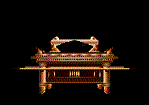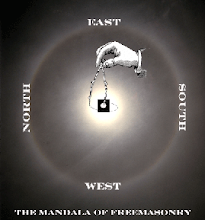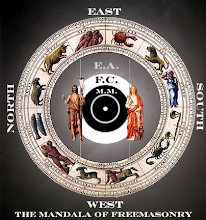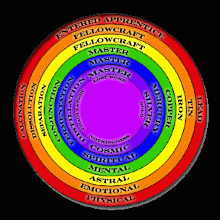 "All that I can hope, and pray is that your individual will can be merged into the divine will, that revelation will be increasingly yours, and that you will with increased steadfastness tread the Path from darkness to light, and from death to immortality."
"All that I can hope, and pray is that your individual will can be merged into the divine will, that revelation will be increasingly yours, and that you will with increased steadfastness tread the Path from darkness to light, and from death to immortality." (The Rays and the Initiations by Master Djwhal Khul)
Four Paths One Goal
Well it seems like forever since I wrote a blog, I guess the problem is my tendency to cocoon when the months get dark, a real problem for those that enjoy “Light”.
Light, what is this light we Freemasons seek?
I guess the answer lies in what philosophy we subscribe too.
As I see it (and Roscue Pound), Freemasonry consists of four distinct and often contrasting philosophies. Each one of these philosophies has its followers, yet few see that all combined together create the whole.
I became aware of this first within my Masonic reading, second through Lodge brothers and their beliefs, and third through the various Masonic blogs that have popped up on the internet.
It seems everybody is certain what Freemasonry actually is, but few seem to agree.
What I am talking about here is the philosophy of Freemasonry, not the mythical speculation of our fraternity’s origin, our ties to the Knights Templar’s, Eleusinian mysteries, or The Hiram Key; I am talking about our path towards Light, and what path we have chosen.
What I am talking about here is the philosophy of Freemasonry, not the mythical speculation of our fraternity’s origin, our ties to the Knights Templar’s, Eleusinian mysteries, or The Hiram Key; I am talking about our path towards Light, and what path we have chosen.
As I stated earlier there are four distinct philosophies within Masonry, lets call them Prestonian (after William Preston), Krauseian (after Karl Krause), Oliverian (after George Oliver), and Pikeian (after Albert Pike).
Each one of these brothers lived, ate, and breathed Freemasonry. Each individual believed Masonry to be a philosophy different from the other.
To William Preston: (Illustrations of Masonry) Masonry is a traditional system of knowledge and its end is to impart knowledge. Hence, he thinks of the relation of Masonry to education. Living in an intellectual period, it was only natural for him to think that knowledge was the key to the philosophy of Freemasonry.
Here we have the Seven Liberal Arts and Sciences.
To Karl Krause: (studied philosophy under Professor Friedrich Schelling, Hegel, Fichte, and taught Arthur Schopenhauer. Schelling, Goethe and Fichte were Freemasons, pantheistic philosopher) it is organized morals and its end is to put organized humanity behind the universal moral ideas of humanity. Hence, he thinks of the relation of Masonry to law and government. He was the founder of a law school, taught law for a number of years, and wrote extensively on the philosophy of law. Krause approached Masonic philosophy through morals and argued that the maintenance of a social order means responsibility to man.
To George Oliver: (Reverend George Oliver, Doctor of Divinity) it is a mode of approach to God and its end is to bring us to the Absolute by means of a pure tradition. Hence, he thinks of the relation of Masonry to religion. He based his Masonic philosophy on tradition, contending that Seth taught pure Masonry to his descendants before the great flood and that Masonry, therefore, is a traditional science of morality.
To Albert Pike: (Morals and Dogma, Esoterika lawyer, poet, mystic, well versed in Eastern Philosophy) gives us instead a metaphysic Masonry. To him Masonry is a mode of studying first principles and its end is to reveal and to give us possession of the universal principle by which we may master the universe. Hence, he thinks of the relation of Masonry to the fundamental problems of existence. It must be remembered that Pike lived in the time of the transcendentalists.
“The Universe should be deemed an immense Being, always living, always moved and always moving in an eternal activity inherent in itself, and which, subordinate to no foreign cause, is communicated to all its parts, connects them together, and makes the world of things a complete and perfect whole.” _Albert Pike
“Masonry is a product of the man and of the time and we must look first at each of these in order to treat it intelligently.” -Brother Roscoe Pound
If this is the case, that Masonry is a product of the time, what is Masonry today?
Below is an article I found on Google Books. I thought others might find it interesting, and see if they could figure out what school of Masonic thought the brother followed.
Br. English, of Arkansas (In the Freemason‘s Monthly of 1869), presents a full dissertation on the subject of Light.
"Darkness," says our brother, "is an emblem of ignorance, superstition barbarity, fanaticism, intolerance, vice, and crime. Light is a symbol of intelligence, refinement, and true civilization, enlarged and liberal views — of all that is good, all that is virtuous, all that is beautiful. The Sun, the source of natural Light is the symbol of Masonic Light, and Masons have been aptly termed the Sons of Light. Of man and his helplessness, our brother states: "But man created for nobler ends, organized with distinct natures, one to perish here, and the other to live forever, is endowed with almost an infinite capacity for obtaining that Light of which the Light created by the Almighty fiat, in the beginning of time, when darkness covered the face of the great deep, is but the Masonic symbol. Yet man, with all his superior endowments, comes into the world with less knowledge than most of the inferior animals. The infant man is less intelligent than the infant ass! And far more helpless. Masonry comes to man's relief. Masonry, like nature, reveals her sublime mysteries, unlocks the sources of Light to her toiling initiates. . . . The apprentice is taken from the darkness of the profane world and permitted to enter the antechamber, and stand upon the ground floor of that luminous Temple, whose higher apartments he is afterward to explore. In the third and sublime degree, the last of the symbolic series, the candidate enters the sanctum sanctorum of the Temple of Light. . . . All along the track of time, blackened by crime and stained with blood, Masonry has erected her Temples of Light and taught man to be virtuous, charitable, and good."
Last Thought
Light is thought to be the force of illumination, growth, expansion, and enlightenment. It represents the forces of the grain and growth in Nature. It is dominant in mental activity and solar forces. In metaphysics, light is viewed as an energetic force possessing neither a positive or a negative connotation. Light is just essential for the illumination and growth of things.
Light is thought to be the force of illumination, growth, expansion, and enlightenment. It represents the forces of the grain and growth in Nature. It is dominant in mental activity and solar forces. In metaphysics, light is viewed as an energetic force possessing neither a positive or a negative connotation. Light is just essential for the illumination and growth of things.










3 comments:
Great post. Lately I've seen a lot of mystical reference to the Sun. So naturally this caught my eye, "The Sun, the source of natural Light is the symbol of Masonic Light, and Masons have been aptly termed the Sons of Light."
The quote just after that was quite interesting.
Beautifully done.
I wonder though if there is another layer, a subrosa layer of the esoteric thought. The Wilmshurstian's who find it more a metaphysical organization that is really a westernized means of transformation by construction...
Is it all of these, and by correspondence, none of them?
Do you know the essay in "The Builder" by Roscoe Pound, called "The Philosophy of Freemasonry"? It covers these four brothers, and is very informative.
Post a Comment